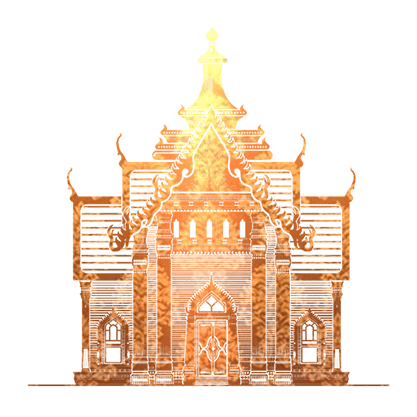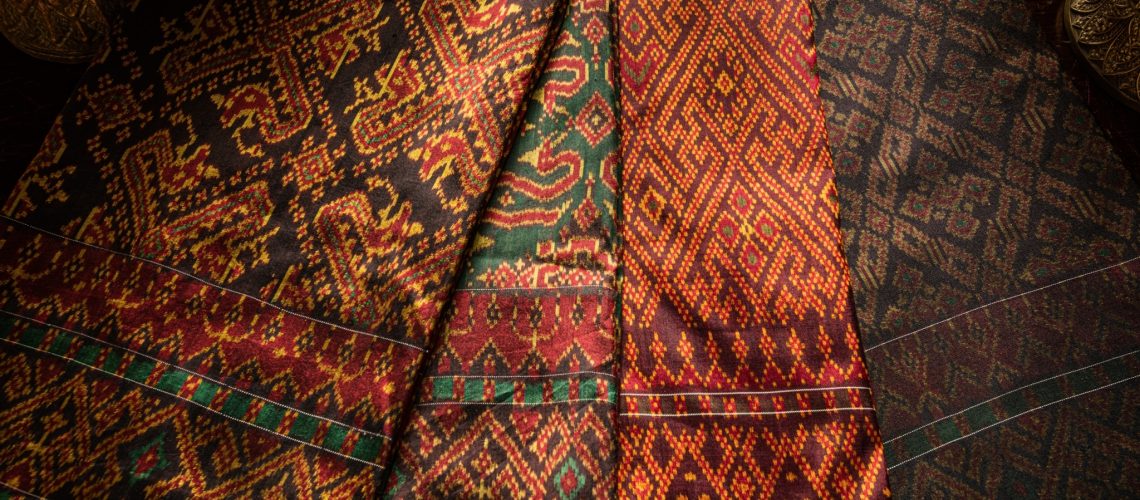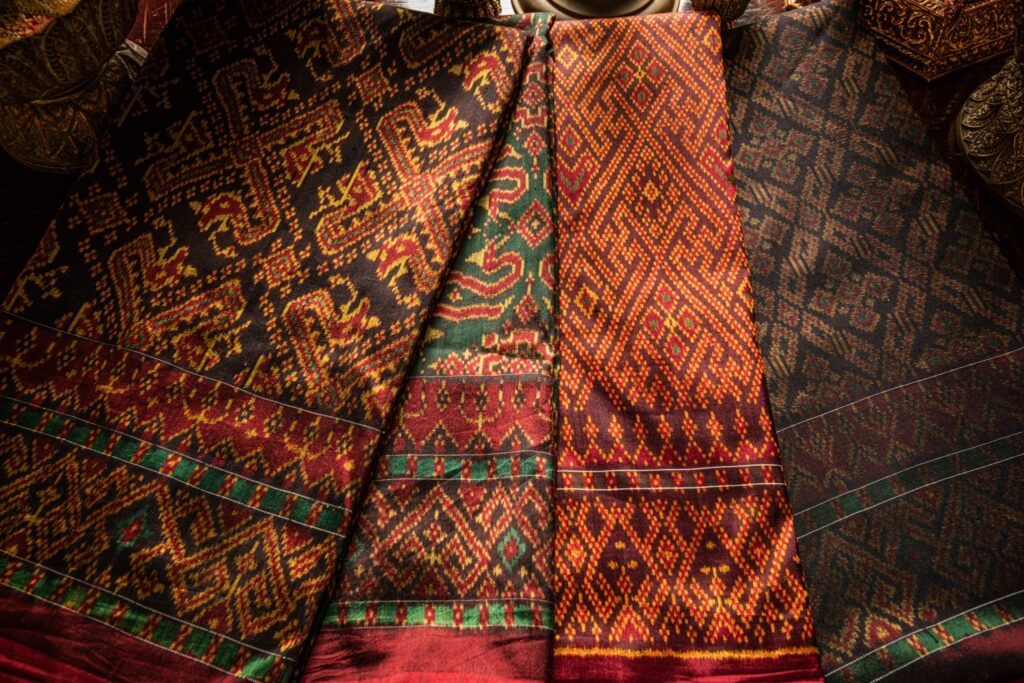
Som Pak Poom Chintz is an ancient fabric that gained popularity in the Siamese royal court during the Ayutthaya period. This exquisite cloth was traditionally bestowed by the king upon nobles as a symbol of their rank and status. It is worn according to one’s rank and status, exclusively during royal audiences or significant ceremonies, and only within the palace grounds. It is regarded as a finely woven fabric of exceptional quality.
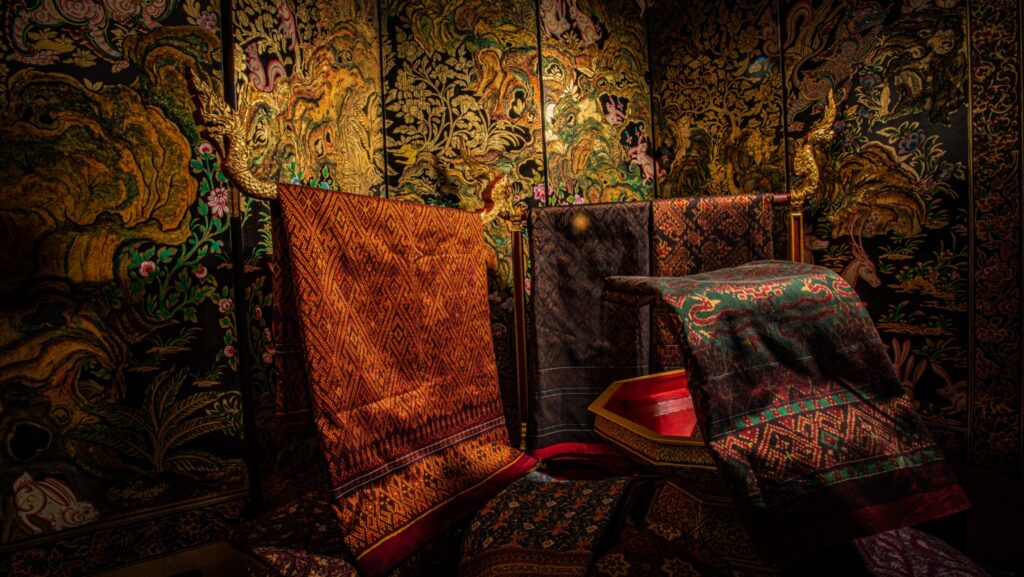
In the past, Som Pak Poom Chintz was made from two narrow pieces of fabric sewn together, resulting in a cloth that was wider and longer than a typical sarong. This made it suitable for use as a Chong Kraben-style sarong. The weaving techniques and patterns on the cloth reflect the wearer’s status, with various styles intended for significant occasions. These include styles such as Pha Som Pak Choeng Poom, Pha Som Pak Long Chuan, Pha Som Pak Poom Dok Lek (small flower), Pha Som Pak Poom Dok Klang (medium flower), Pha Som Pak Poom Dok Yai (large flower), and Pha Som Pak Poom Tong Nak (King of Nagas).
Each type of fabric is suited for specific occasions, with each element of the design reflecting a distinct division of areas that corresponds to the rank of the nobility. To determine the type of pattern on the fabric, one must examine the underside, identifying whether it features small, medium, or large designs. Additionally, the fabric’s color may indicate the specific department or bureau to which the wearer belongs. The royal attire of the royal family often differs from that of the nobility, as it incorporates more luxurious materials and embellishments. In addition to high-quality silk, silver or gold threads may be woven into the fabric, enhancing its beauty and value.
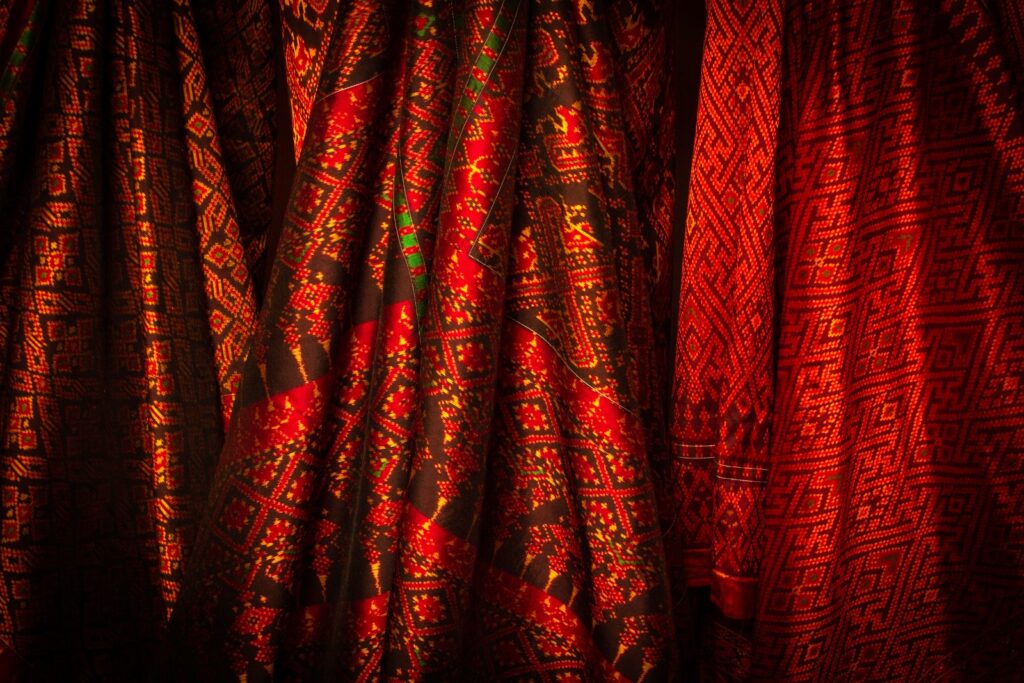
- Pha Som Pak Poom Tong Nak (King of Nagas) is regarded as the most prestigious fabric, distinguished by its intricate and beautiful patterns, as well as its complex weaving process. Only 6 royal officials were permitted to wear this esteemed cloth: Samuha Kalahom (head of Military Affairs), Samuha Nayok (head of Civil Affairs), and Chatusadom (the ex-Thai central executive governance), including those from Krom Wiang (The Police Bureau), Krom Wang (Ministry of Palatial Affairs), Krom Khlang (Ministry of Treasury and Taxation), and Krom Na (Ministry of Agriculture). Additionally, it was also granted to senior officials of lower ranks, such as Chao Phraya and Phraya.
- Som Pak Poom Dok Lek (small flower), Dok Klang (medium flower), and Dok Yai (large flower) are regarded as the next highest-ranking fabrics. The patterns on these fabrics resemble those of Pha Som Pak Poom Tong Nak and were typically bestowed upon high-ranking officials holding the titles of Phraya and Phra
- Pha Som Pak Choeng Poom shares the same structure as other types of Som Pak Poom Chintz; however, it features a plain-colored fabric underneath. This type is less commonly adorned with a “Mat Mii” pattern, often named after the fabric’s color. Pha Som Pak Choeng Poom was granted to ministers and officials with ranks ranging from Phra down to Luang and Khun.
- Pha Som Pak Long Chuan and Pha Som Pak Riew feature distinct fabric structures compared to other types of Som Pak Poom Chintz. They are woven using the Mat Mii technique, showcasing horizontal stripes on the underside and bordered by patterns on both sides. These fabrics were granted to officials with ranks ranging from Luang down to Khun, Muen, and Nai, which represent the lowest rank.
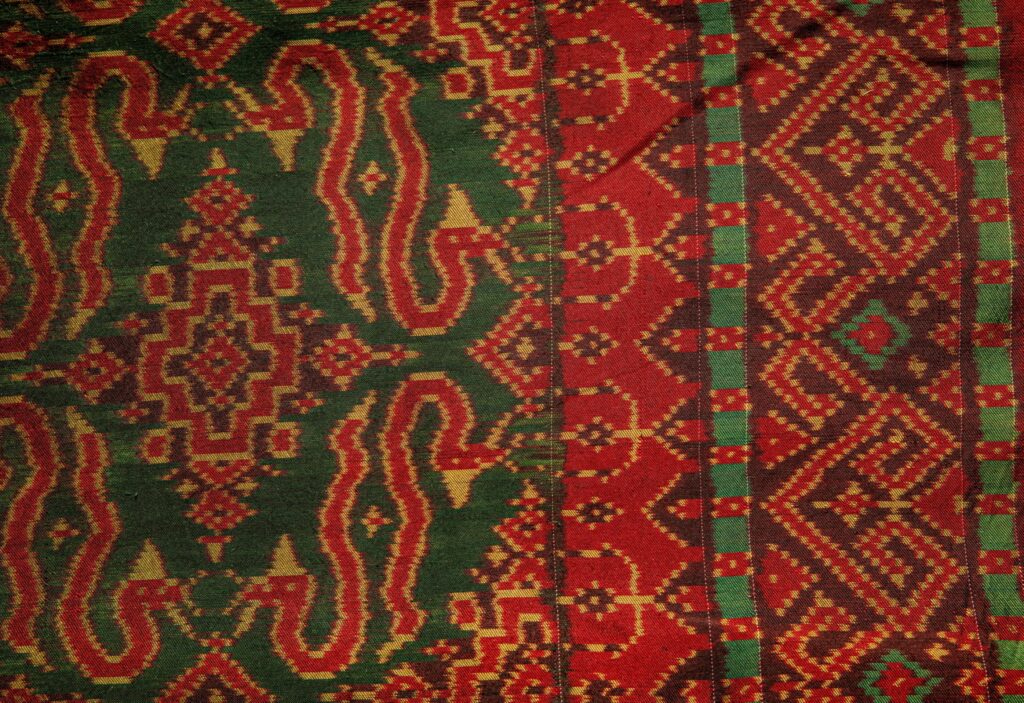
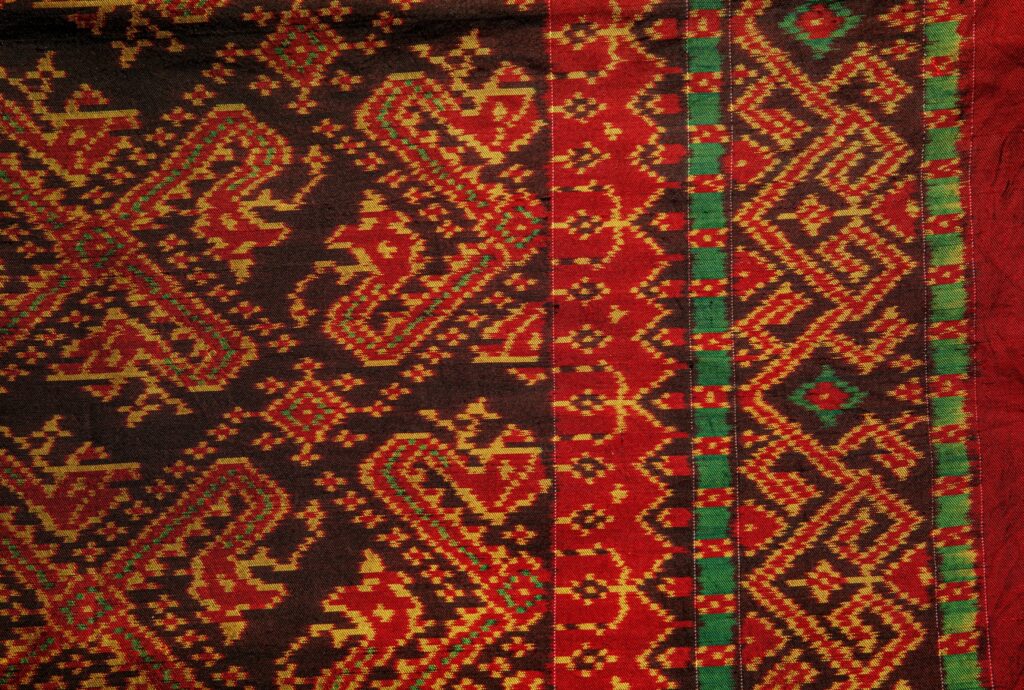
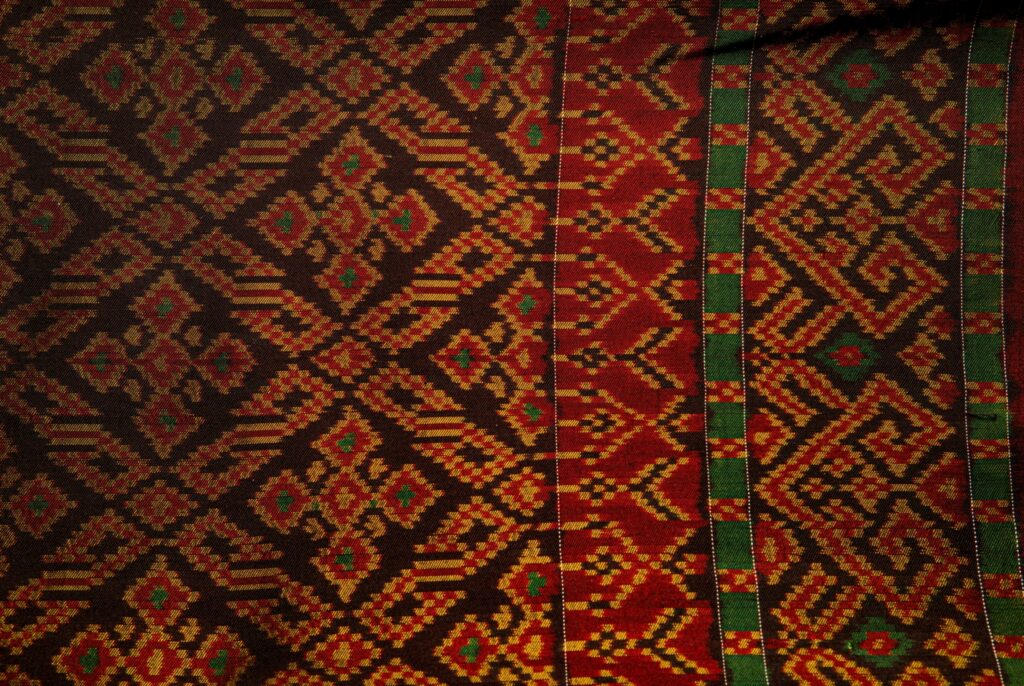
and 4 side Chor Taeng Tong (the inner border)
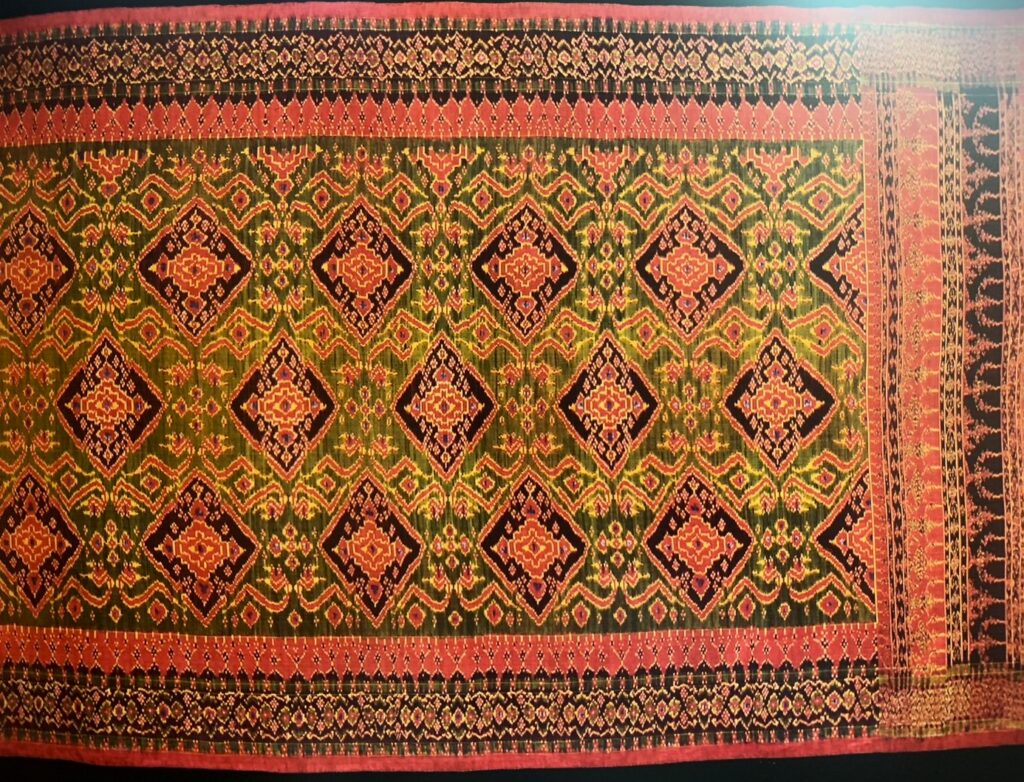
Som Pak Poom Chintz with Nak (Naga)
ขอบคุณภาพจากหนังสือราชภูษิตาภรณ์สยาม
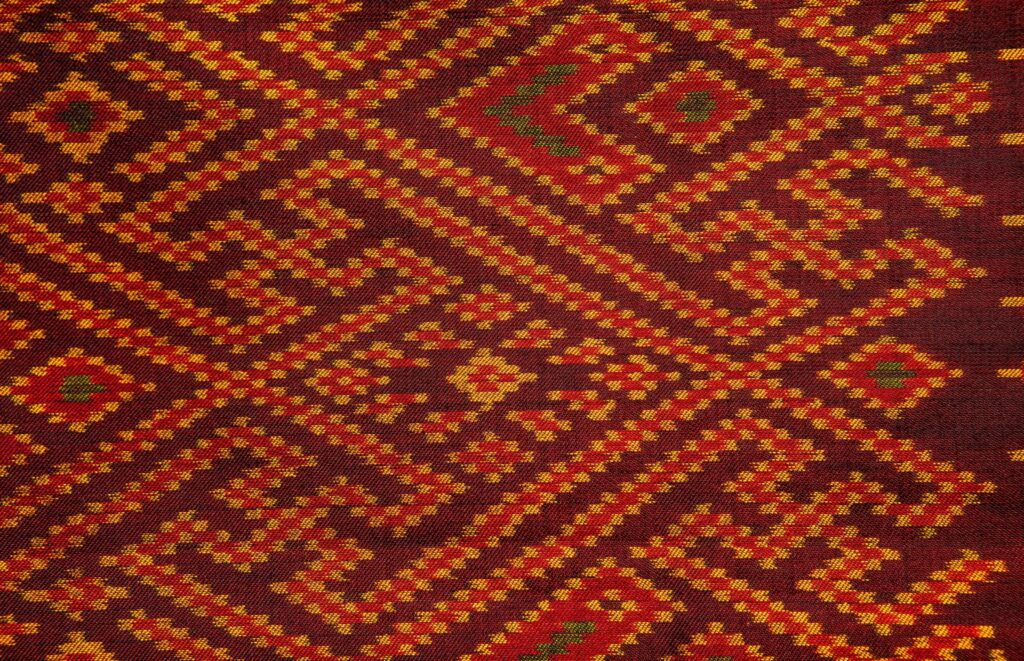
Som Pak Poom Chintz is a handwoven fabric characterized by its intricate and delicate patterns, crafted using the Mat Mii technique. This results in a fabric with either 2 or 3 layers of Kruai Choeng, and in some instances, it features a special Kruai Choeng design. The fabric includes Sang Wian (outer borders) at the top and bottom, with patterns on the Tong Pha (the body part), following a longstanding ancient tradition that has been passed down through generations. This intricate weaving technique demands exceptional craftsmanship, with each piece of Som Pak Poom Chintz taking several months to create, resulting in a delicate and beautiful fabric. Today, it is regarded as a rare and valuable textile.
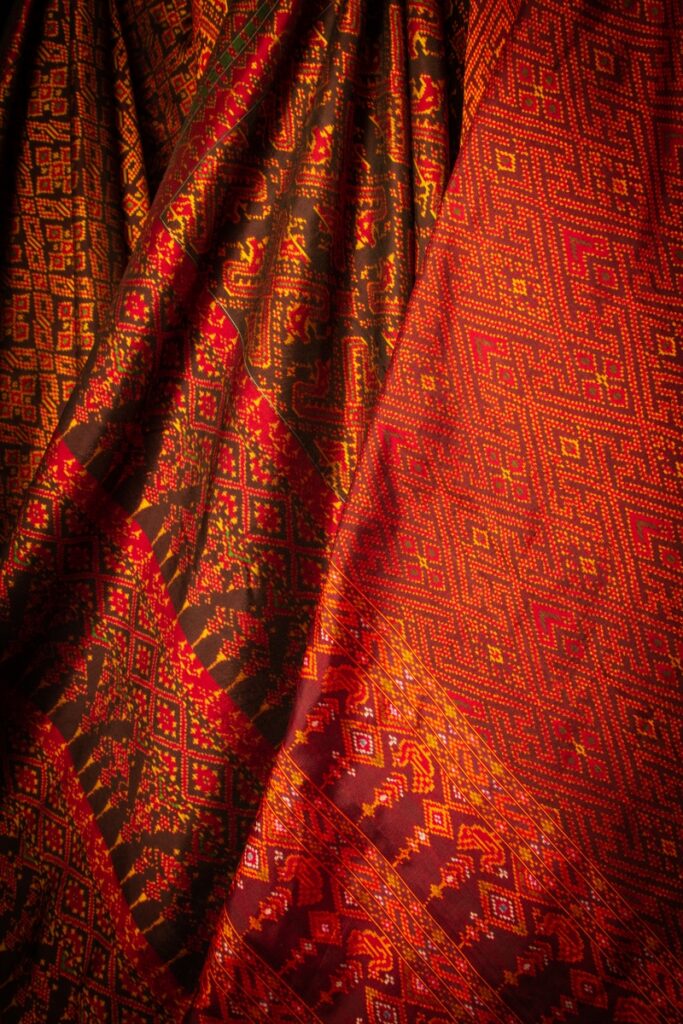
The ancient Som Pak Poom Chintz has a distinctive composition, characterized by its central Tong Pha section, which features various patterns surrounding it, known as Chor Taeng Tong. This is flanked by the Sang Wian section, which encircles the Chor Taeng Tong, and an outer section of the cloth that contains the Kruai Choeng set.
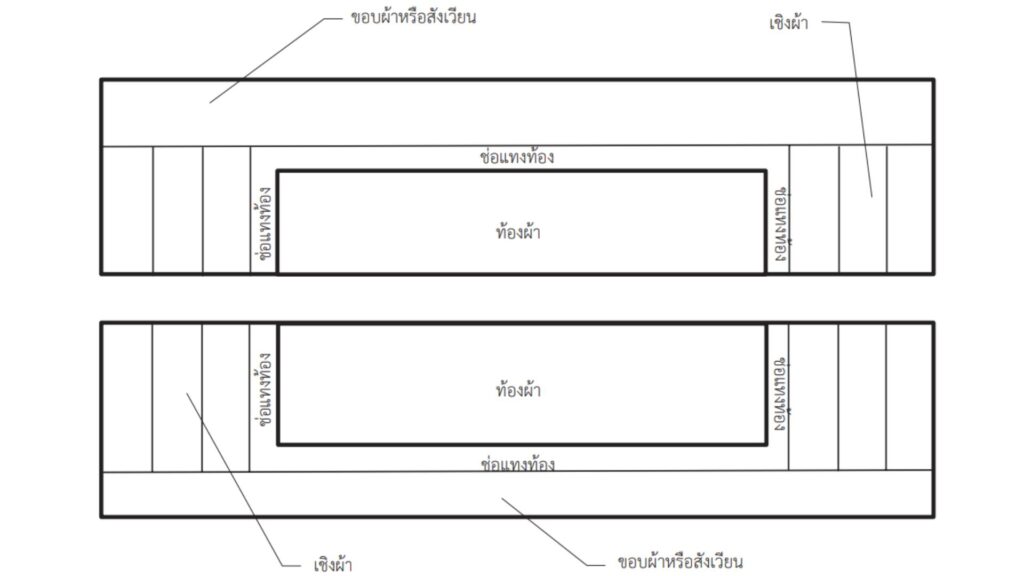
ขอบคุณภาพจากหนังสือสมปักปูมภูมิผ้าเขมรไทยจากราชสํานักสู่สามัญชน
โครงสร้างของผ้าสมปักปูม
ขอบคุณภาพจากหนังสือสมปักปูมภูมิผ้าเขมรไทยจากราชสํานักสู่สามัญชน
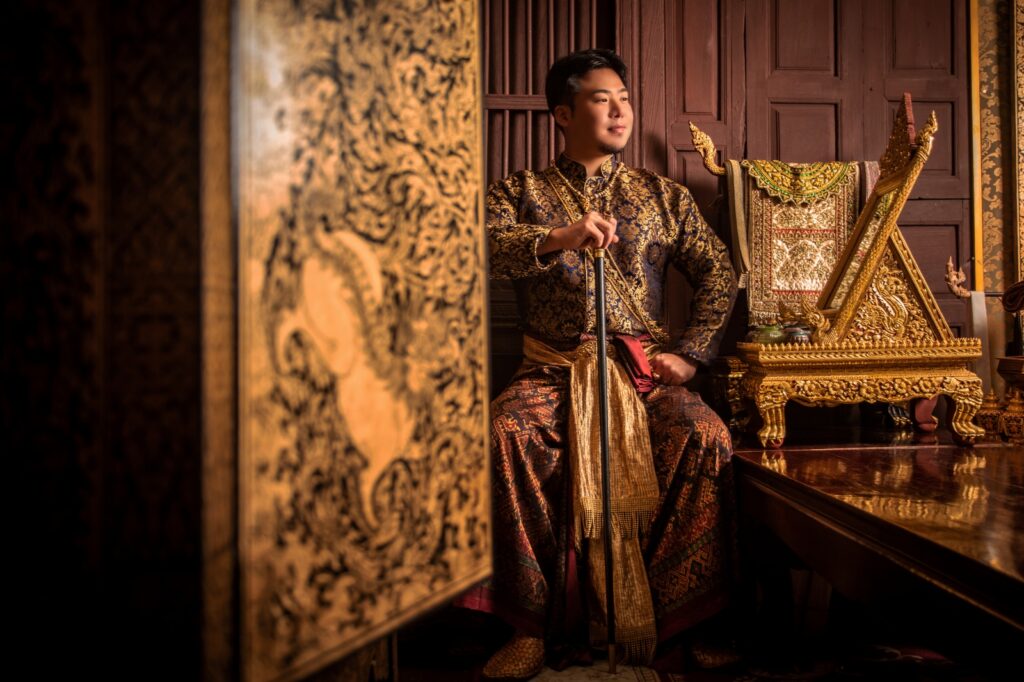
Som Pak Poom Chintz is primarily dyed in a rich red color derived from lac, which is known for its longevity and resistance to fading, ensuring that the fabric does not shrink. It is typically dyed in muted tones rather than vibrant hues, making each piece suitable for all important ceremonies. Another distinctive feature of Som Pak Poom Chintz is its unique edge-weaving technique, setting it apart from other types of fabrics. The silk threads at the edges are pulled back into the cloth, creating a reinforced edge that prevents tearing. This method not only thickens the edges but also makes them easier to maintain
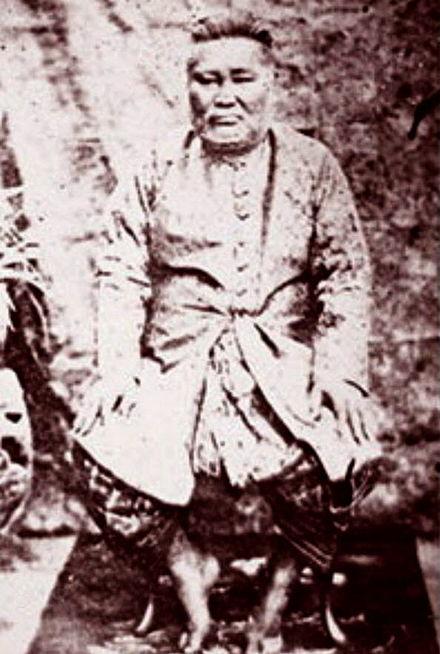
Chaophraya Thiphakorawong (Kham Bunnag) Pair a closed-neck brocade shirt with a Chong Kraben-style skirt featuring Pha Poom.
ภาพ: สำนักหอจดหมายเหตุเเห่งชาติ
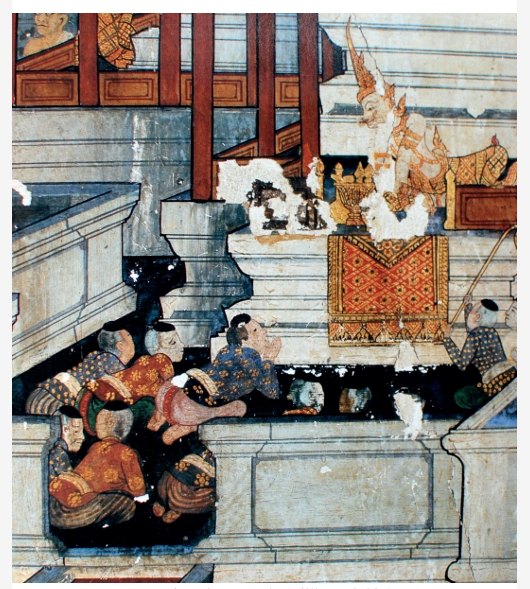
Murals from Wat Pathum Wanaram
Showing the attire of a nobleman wearing a Chong Kraben-style skirt featuring Pha Poom
ภาพจากหนังสือสมปักปูมภูมิผ้าเขมรไทยจากราชสํานักสู่สามัญชน
The unique characteristic of Som Pak Poom Chintz weaving is its three-twill technique, which combines dotted and straight lines. This method utilizes two-colored double silk threads that alternate to create intricate patterns across the fabric, resulting in alternating stripes and Mat Mii designs approximately half an inch wide. Regarded as a highquality handwoven textile, Som Pak Poom Chintz is crafted from fine, smooth silk fibers, resulting in a dense, lustrous, and lightweight fabric that is exceptionally comfortable to wear.
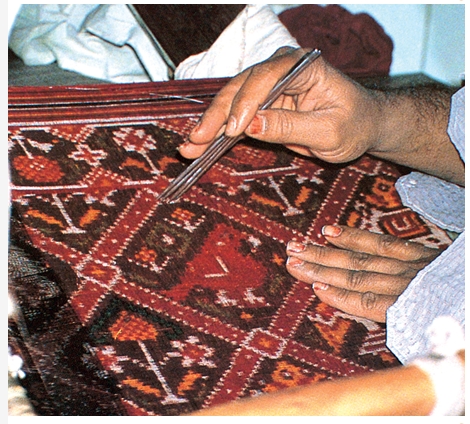
วิธีการทอผ้าสมปักปูม
ขอบคุณภาพจากหนังสือสมปักปูมภูมิผ้าเขมรไทยจากราชสํานักสู่สามัญชน
Later, King Chulalongkorn (Rama V) issued a new dress code, abolishing the traditional Som Pak and mandating that all members of the royal family and nobility wear Pha Muang, imported from China, along with various shirts during royal audiences and ceremonies. Despite this change, some government officials continued to wear the Som Pak in the traditional style.
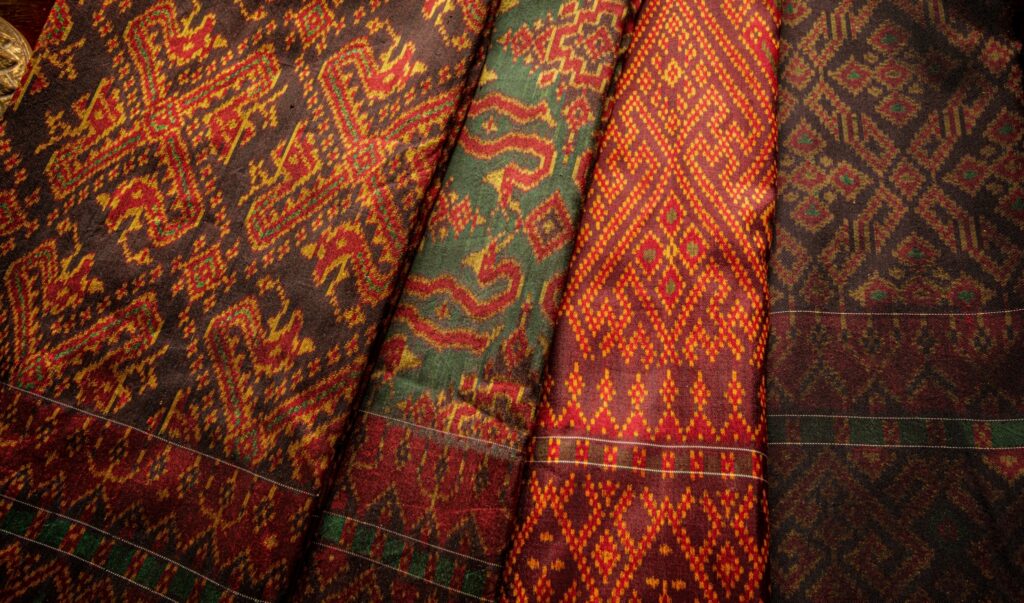
Today, the terms “Pha Poom” and “Pha Som Pak Poom” are largely unfamiliar to most people, as these names have faded from the consciousness of Thai society and culture. The younger generation is increasingly unaware of “Pha Som Pak Poom,” an ancient fabric that dates back to the Ayutthaya period and is now rare. Additionally, only a handful of artisans continue to weave this type of fabric in select areas, raising concerns that this traditional craft may soon vanish altogether.
Tip: The term “Som Pak” has Khmer origins, derived from the word “Sampot,” which refers to a cloth traditionally used as a loincloth for both men and women.
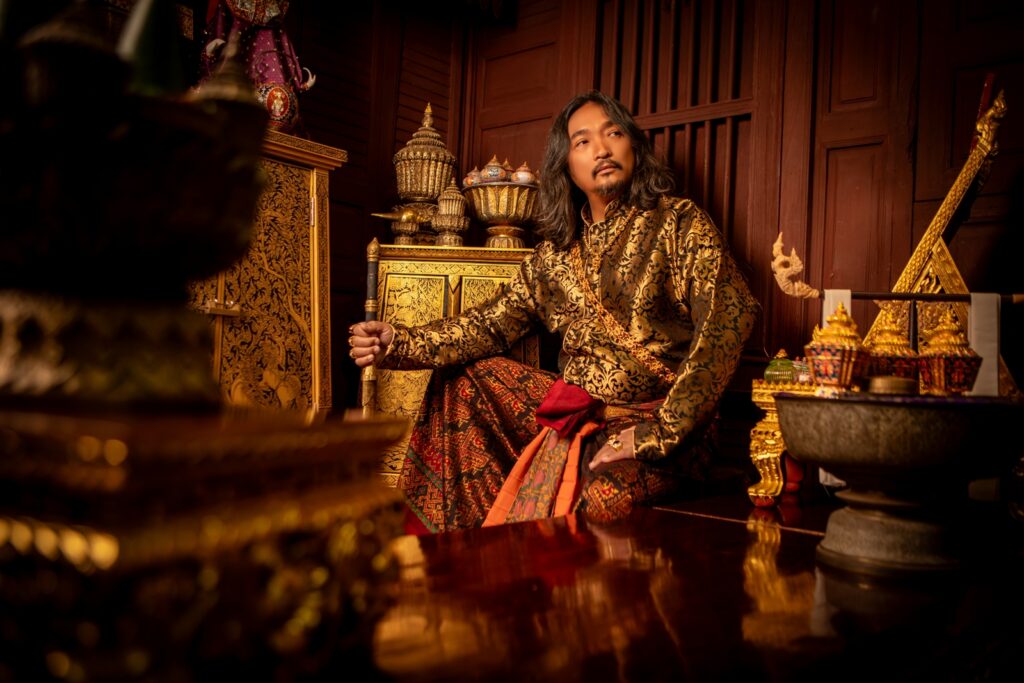
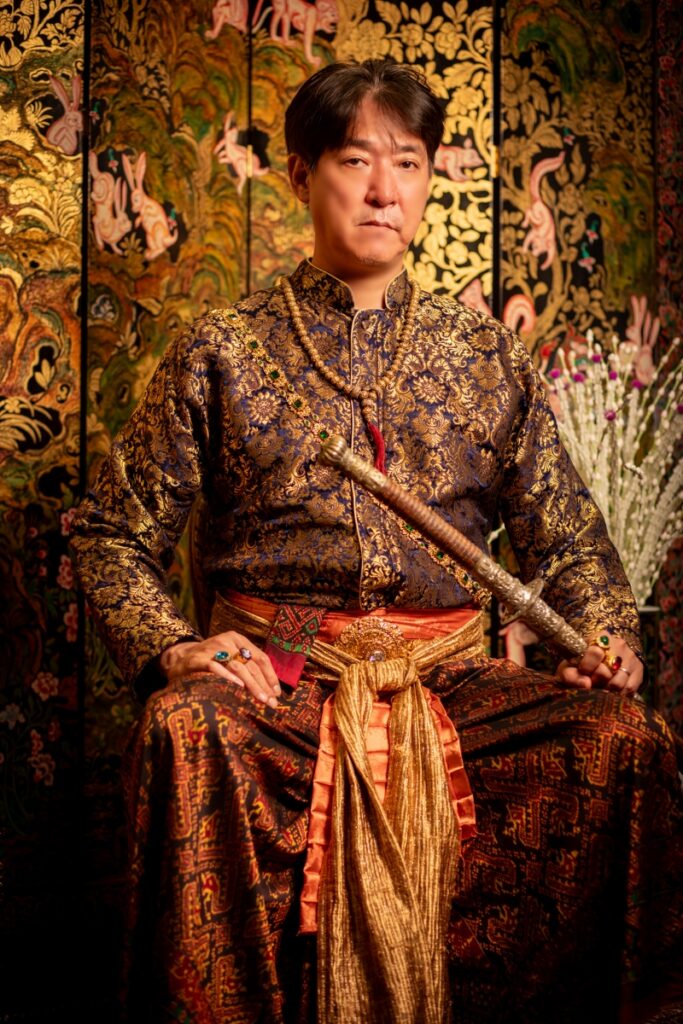
An author assistant Nonthawat Ningjaiyen
